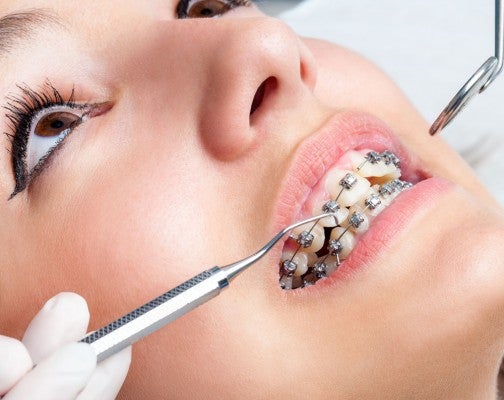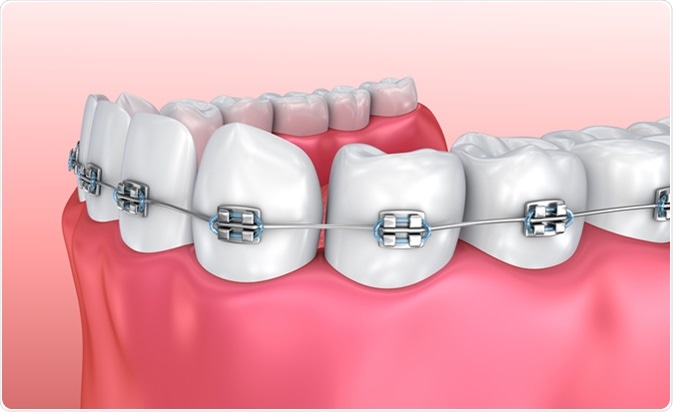Comprehensive Guide to Orthodontics Treatments for Remedying Dental Misalignments
In the world of orthodontics, the trip to achieving a flawlessly lined up smile involves a myriad of procedures tailored to remedy oral misalignments. From traditional braces to unseen aligners and also medical alternatives, the area of orthodontics provides a variety of options to deal with differing levels of oral abnormalities. Recognizing the complexities of each treatment, including their devices, advantages, and potential disadvantages, is essential in making educated choices concerning one's orthodontic therapy. As we browse via the extensive overview to orthodontic procedures for remedying dental misalignments, the intricate information of each technique will certainly unravel, clarifying the course toward a unified and functional oral positioning.
Orthodontic Procedures Summary

Regular adjustments and surveillance are important components of orthodontic treatment to make sure progression is on track and to make any needed adjustments along the method. By undertaking orthodontic procedures, patients can not only achieve a straighter smile but also improve their general oral health and wellness and function.
Conventional Braces: How They Work
When taking into consideration orthodontic treatments for oral misalignments, traditional dental braces stick out as a tried and true approach for dealing with teeth placing. Conventional dental braces include brackets, cords, and bands that collaborate to use constant pressure on the teeth, gradually relocating them right into the desired positioning. The brackets are affixed to the teeth making use of a special adhesive, and the cords are threaded through the brackets. By readjusting the tension of the cords, orthodontists can manage the direction and pressure put on each tooth, directing them right into appropriate alignment over time.
As stress is used to the teeth with the braces, the bone surrounding the teeth is improved to support the brand-new tooth settings. Individuals will certainly require routine modifications at the orthodontist's office to guarantee the braces proceed to use the correct pressure for effective teeth activity.
Invisible Aligners: Cons and pros
These clear, customized trays are basically unnoticeable when worn, making them an enticing option for people seeking an extra aesthetically pleasing orthodontic therapy. Clients can get rid of the aligners before consuming or cleaning their teeth, minimizing the danger of food obtaining stuck in the home cheap dental insurance appliance and simplifying the cleansing procedure.

Surgical Orthodontic Options
Surgical interventions in orthodontics existing sensible options for attending to intricate dental misalignments that might not be successfully dealt with via conventional orthodontic therapies. While typical dental braces and undetectable aligners can fix numerous orthodontic problems, certain cases require medical treatment to accomplish optimal results. read this article Surgical orthodontic alternatives are commonly advised for serious malocclusions, considerable jaw discrepancies, and cases where the underlying bone framework needs modification to attain appropriate alignment.
One common medical orthodontic procedure is orthognathic surgery, which includes repositioning the jaws to remedy practical concerns such as difficulty eating or talking. This surgical treatment is commonly carried out in partnership with an orthodontist that assists align the teeth before and after the procedure. Surgical orthodontics may additionally involve treatments to reveal impacted teeth, eliminate excess periodontal tissue, or reshape the jawbone to develop a more harmonious face profile.
Before considering medical orthodontic alternatives, individuals go through an extensive examination to figure out the need and prospective advantages of such interventions. aligners. While surgical procedure might seem overwhelming, it can considerably boost both the function and looks of the smile in cases where conventional orthodontic therapies fail
Retainers and Post-Treatment Treatment

Failing to comply with post-treatment treatment instructions can result in regression, where the teeth progressively relocate back in the direction of their original positions. Consistent retainer wear, excellent dental hygiene, and regular oral exams are essential for keeping the outcomes accomplished through orthodontic surgery and guaranteeing the long-lasting stability of the fixed oral placement.
Final Thought
Finally, orthodontic procedures offer numerous choices for remedying dental imbalances. Standard braces use metal braces and cords to change teeth into proper alignment. Invisible aligners provide an even more very discreet alternative but may not appropriate for all situations. Surgical orthodontic choices are offered for a lot more severe imbalances. Retainers are frequently used post-treatment to preserve the new placement. In general, orthodontic treatments can efficiently boost dental health and wellness and aesthetic appearance.
As we navigate with the thorough guide to orthodontic treatments for remedying oral imbalances, the elaborate information of each method will unfold, losing light on the course toward a harmonious and useful dental positioning. - cumming aligners
One of the most common orthodontic treatments is the usage of dental braces, which are composed of metal brackets and cables that use mild pressure to slowly move teeth right into the desired setting.When taking into consideration orthodontic treatments for dental misalignments, standard dental braces stand out as a reliable method for fixing teeth placing. In addition, invisible aligners may not be appropriate for intricate orthodontic concerns that require more considerable teeth motion, as they are commonly suggested for moderate to modest instances. Retainers are tailor-made orthodontic tools created to hold teeth in their fixed placements after the completion of orthodontic treatment.